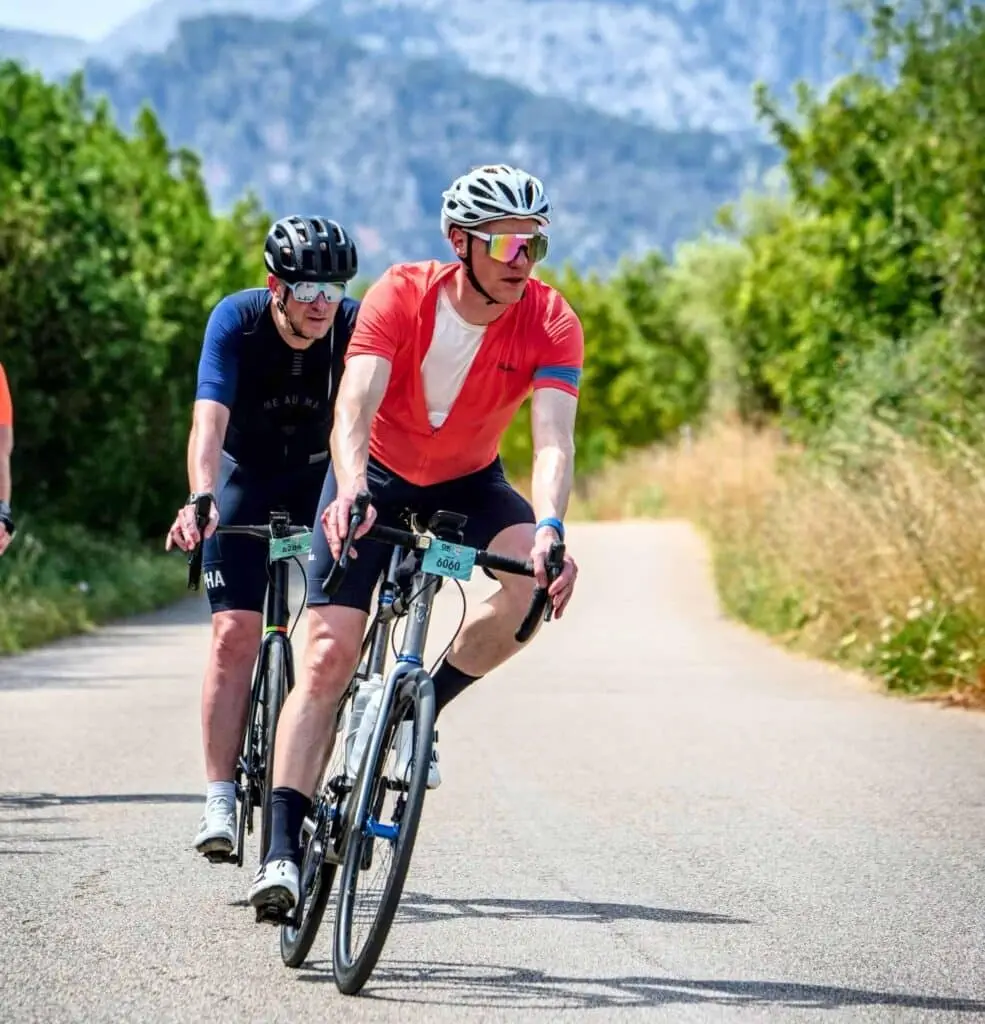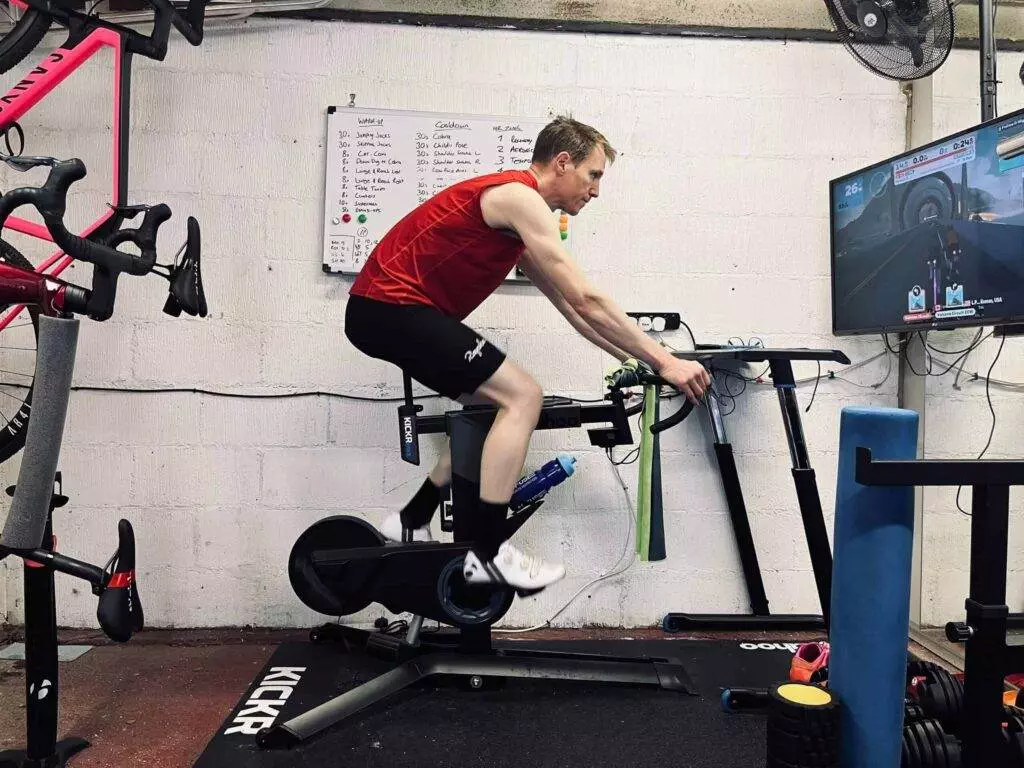If you are new to cycling or a seasoned athlete, you may wonder how biking changes your body. You’re probably thinking about increased fitness, the ability to lose weight, muscle strength, setting a new PR, and burning calories, right?
But did you know that cycling actually has many health benefits for the whole body? (That includes psychological perks too!)
Regular cycling has many physical benefits, such as increased muscle strength and changes to your body shape. But it also has phenomenal results in reducing stress and anxiety and boosting mood.
All muscle groups come into play when enjoying this sport, and in this article, we explore five surprising benefits that you may not have known!
So what are you waiting for? Let’s dive (or should we say pedal) in!
Key Takeaways
- Cycling improves cardiovascular fitness
- The impact of cycling on body shape includes weight loss and muscle toning
- Joint health improves thanks to the body’s movements
- Mental health is boosted when cycling and being outdoors
- Track cyclists, off-road cyclists, and indoor cyclists all experience benefits from cycling

1. Cardiovascular fitness
Biking is a great way to improve your cardiovascular health. It strengthens your heart and increases blood circulation. The heart is a muscle, like any muscle, and needs regular exercise to stay healthy.
Biking is a terrific form of exercise that boosts heart fitness and reduces the risk of cardiovascular disease.
Research has shown that biking for 150 minutes per week at a moderate pace can reduce the risk of cardiovascular disease by 31%! These diseases include; heart attacks, strokes, high cholesterol, and high blood pressure.
Biking increases nitric oxide production, a molecule that dilates blood vessels and improves blood flow to the heart.
To reap optimal benefits, it’s best to cycle for at least 30 minutes per day, five days a week. The intensity of your ride should be at a moderate pace, meaning that you are still able to hold a conversation but are slightly out of breath. This “talk test” is a great way to gauge your training efforts.
It’s worth mentioning that you should make sure your bike is properly fitted to suit your body to get the most out of cycling. This can be done through professional fittings or by adjusting the seat and handlebar height yourself.

Overall, using cycling as a form of cardiovascular exercise is an excellent choice. Try to aim for five workouts, of moderate intensity, per week, and you’ll be on the road to a healthier (and happier!) heart.
2. Muscle tone
Regular biking can lead to stronger, more defined leg muscles, giving you a leaner and more athletic appearance. Cycling is great for strengthening your lower body muscles and building muscle mass. Specifically in the quadricep, hamstring, and calf muscles.
When you pedal, these leg muscles go through a range of motions that strengthen and tone over time.
The quad muscles are the muscles found on the front of the thigh and are responsible for extending the leg. You engage these muscles when you pedal, building resistance and increasing muscle growth each time you ride.
The hamstrings, found behind the thigh, are responsible for flexing the leg. Pedaling builds bigger muscles with each action, leading to improved body tone.
To get the most muscle-toning benefit from biking, it’s best to vary your exercise routine. Add resistance training, such as high-intensity sprints and low-intensity rides, to your workouts.
These aerobic exercises engage the leg muscle group, burn calories, and increase muscle definition and strength.
While biking gives your upper body and lower body a great workout, it is a leg-dominant sport. To train your lower body muscles for peak performance, include a few weight training sessions in your exercise routine.
Exercises such as lunges, leg presses, and squats will build bigger leg muscles and improve your overall cycling performance.
Always stretch – both upper body and lower body muscles – before and after each ride to prevent any injury.
Following a consistent exercise plan will enhance your chance of weight loss – in both lower and upper body areas. Losing fat will result in leaner, toned muscles and changes to your overall body shape.

3. Weight loss
Cycling is an ideal form of exercise for those who want to lose weight or maintain a healthy weight. Not only is it an enjoyable sport, but it burns significant calories as well!
Cycling can help you lose body fat, increase lean muscle development (perfect for weight loss!), and boost your mood (but more on that later).
One of the main benefits when you cycle regularly is that it is a low-impact exercise. This makes it an excellent option for those who are overweight or suffer from joint pain.
Cycling is a good choice for weight loss when high-impact activities – such as running or tennis – can cause discomfort when training.
It is important to note that weight loss varies from person to person, based on many factors. These include gender, age, natural body shape, the number of intense training sessions per week, and dietary habits.
By cycling regularly, you can change the overall shape of your body, lose weight, and improve your cardiovascular health.
Biking has the ability to increase your metabolic rate, meaning it burns calories during and after each workout. You can burn between 400 and 1,000 calories per hour of cycling (depending on weight and intensity). This results in your body being in a calorie deficit which burns more body fat.
Cycling is also a superb social sport. Joining a group or having a biking buddy can help keep you on track, holding you accountable for your training and weight loss goals.
Biking is an effective weight loss and weight management tool when coupled with a healthy diet. It increases metabolic rate, promotes lean muscle growth, and is a low-impact exercise. Plus, you’re able to rope in some friends for added benefit and motivation!

4. Joint health
As we mentioned, biking is a low-impact exercise that is easier on your joints. It’s highly effective when compared to other high-intensity sports, such as running. This low-intensity exercise is a wonderful way to improve joint mobility.
It’s proven to reduce joint pain and inflammation in those who suffer from these issues.
When cycling, you predominately use your lower body muscles. The circular pedaling motion helps lubricate the joints, increasing oxygen and blood flow to the muscles. Research has shown that cycling consistently improves mobility and reduces inflammation and stiffness in the joints.
It’s important to mention that cycling also strengthens the muscles surrounding the joints. This provides further support to the weakened area and can reduce the risk of injury.
If you suffer from joint or knee pain, always ensure you use the correct equipment. Having a too big or small bicycle can put unnecessary strain on the body. Do stretch before and after each workout and gradually build your intensity over time.
5. Mental health
Not only does cycling improve physical health, but it has many mental health benefits as well. Why wouldn’t you want to cycle to benefit from reduced anxiety and lowered stress, improve mood, and boost cognitive functions?
The positive mental health effects that biking has on the body are truly phenomenal!
Cycling is a great way to clear the mind and let go of any built-up tension. Cardio training releases endorphins, which have mood-lifting properties. They help reduce feelings of depression and promote overall well-being, positively impacting self-esteem and confidence.

Lastly, cycling improves cognitive functions, such as memory and concentration. Studies show that 30 minutes of regular exercise – such as cycling – per day can greatly benefit concentration, memory, and attention span. This is due to increased blood flow to the brain.
Safety Consideration
Safety is a vital consideration when it comes to cycling. Wearing the appropriate gear, following traffic rules, and choosing safe biking routes will minimize the risk of accidents and injury.
A helmet is the most crucial piece of protective gear for a cyclist, protecting you against any head injuries should you fall.
Following traffic rules is essential for cyclists. Weaving in and out of traffic can be very dangerous and could result in accidents or falls! Always ride with the flow of cars, use hand signals to turn, and stay in designated biking lanes.
Look for safe, bike-friendly routes and try to avoid heavily congested areas.
Another safety tip is to be mindful of the weather. Wet and rainy conditions can make it difficult for cyclists (and drivers) to see. Use bright, reflective gear when biking in bad weather or in the dark. These include reflective belts or jackets and bike lamps.
Always be present and pay attention when you are riding. Being aware of your surroundings and keeping alert is important when on the bike. Paying attention to road conditions such as potholes, loose gravel, or road detours could prevent any accidents.

Getting Started With Biking
Biking is a wonderful way to stay active, explore your surroundings, and be part of a community of like-minded individuals. When choosing the right bike, consider the type of terrain you would mostly use.
Road bikes are ideal for pavement and ‘city rides, ‘ while mountain bikes are best for off-road, dirt tracks.
You’ll then need to kit yourself out with the proper gear (The fun part!). Ensure that your bike is correctly set up to your size, and invest in a good-quality helmet. Padded cycling shorts, or bib suits, are recommended (especially useful when riding daily). Bike lights and a bell are also important.

Look for safe biking routes in your area if you are starting out. These routes may have designated bike lanes and good terrain conditions. It’s a great place to start as you navigate the road and get the feel of biking.
Advanced riders should still make safety a priority, choosing safe routes whenever possible.
Joining a cycling community or riding group can be an excellent way to train and meet new people. Many riding clubs offer training sessions, group rides, and social events. Exploring new routes is easier when riding together, as the saying “safety in numbers” goes.
How does biking change your body shape?
Biking uses various major muscle groups in your body. This sport can alter your body shape by helping you lose weight and become more toned (although natural body shape plays a role).
Apart from the outward changes, biking also helps with blood flow, and mental health and reduces your chances of developing heart disease.
Is cycling good for belly fat?
Depending on your weight, the intensity of the ride, and its duration, cycling can help you burn a substantial number of calories, which can result in weight loss and reduction of belly fat. Additionally, cycling aids in muscle building, particularly in your lower body.
An increase in muscle mass can lead to a faster metabolism, enabling you to burn more calories even when you’re at rest. However, it’s important to remember that you can’t target fat loss from specific body areas. Cycling will assist in overall fat reduction rather than just belly fat.
How long does it take to see results from bike riding?
The time it takes to see results from bike riding varies based on factors like your initial fitness level, the frequency and intensity of rides, diet, and health. Cardiovascular improvements can be noticeable in a few weeks, while muscular endurance and strength might take a couple of months.
Weight loss outcomes depend on exercise and diet, and mental well-being benefits can emerge relatively quickly. Consistency is crucial for lasting results, and consulting a healthcare professional before starting a new routine is advisable.
Can I use an indoor trainer as a form of exercise?
Yes! Indoor cycling has the same effect as outdoor cycling on the body when it comes to exercise. Lower-intensity rides are designed for aerobic training. While high-intensity ‘sprint’ or interval sessions boost anaerobic activity.
Each has an effect on increasing overall fitness, building lean muscle mass, and assisting in changes to body shape.
Online training platforms like Zwift have built-in exercise workouts that help track cyclists’ performance and measure key metrics.

Can I drop body fat from cycling?
Absolutely! Research shows that doing 150 – 300 minutes of moderate to high-intensity exercise per week can help you lose weight and drop body fat. Cardio-based workouts – such as running, cycling, or swimming – are excellent exercises to do if this is your goal.
A healthy diet, rich in protein and plenty of fresh fruit and vegetables, makes it easier for the body to burn fat.
